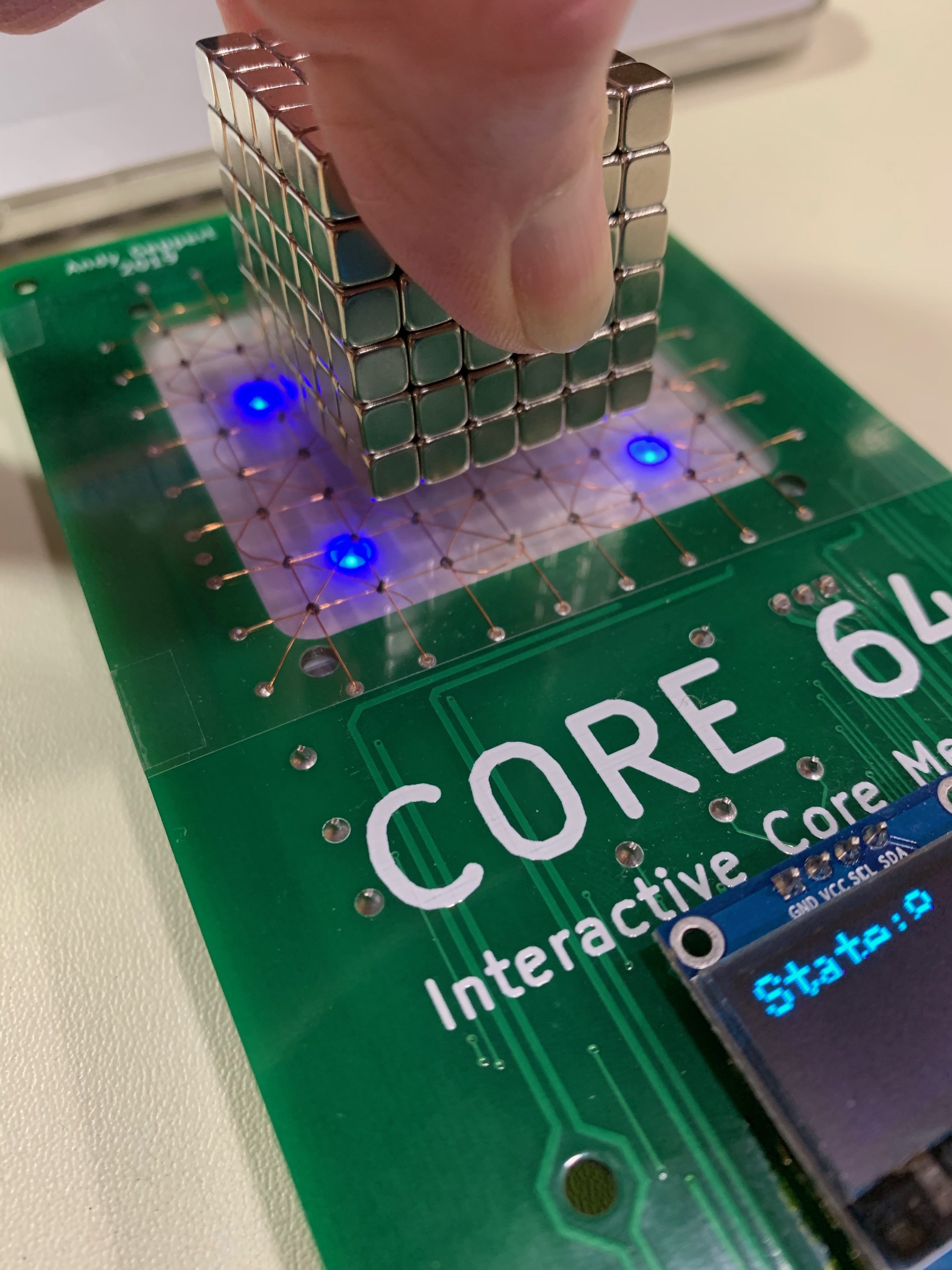The core sensing is now working much more reliably, at least from the perspective of what the MCU can sense. I reduced the threshold required for the Op-Amps to register a change in the sense wires from 22mV to 11mV (corresponds to a 22 Ohm and 11 Ohm resistor change). The increased sensitivity provides a longer output pulse, and gives the MCU more time to see the signal. An improvement I'm considering in a future version is to add a flip-flop as a buffer to make it easier to catch the sense pulse. Right now the timing requirements are very tight, and I am disabling interrupts and using digitalReadFast to catch the core sense wire changes.
A significant part of this project is to enable others to experiment with the design of the firmware and the core control schemes. I am working toward a clean system architecture (both in the firmware and electronics) with robust sample code and APIs. This opens the door to experimentation at any level of the system.
Even at this stage of functionality, there is a lot of fun to be had. For instance, holding this cube of magnets above the cores does not affect all of the cores as you might expect. It only affects the cores at the four corners, where the magnetic flux is far less constrained. This mode of operation is what I call "flux detection" mode. The cores are all being polled every 12 ms, with a corresponding LED array update, to show which cores are effectively being blocked from polarity changes as the 1's and 0's are written. It's highly INTERACTIVE!

Of course, if the cube is held closer to the cores, there is enough flux leakage on the whole surface to affect all of the cores under the magnets.
Next up, some multicolor drawing with persistent pixel changes.
Coincidentally, I just hit a total of 160 hours into this project with this milestone update. That's 4 weeks of full-time work, spread over many months... When I started this, I had the proof-of-concept running, and had just begun watching a great video series on how to use KiCAD. Thank you Shawn Hymel and Digi-Key! This project is my first time designing a PCB from scratch. 10 out of 10, would do again!
 Andy Geppert
Andy Geppert
Discussions
Become a Hackaday.io Member
Create an account to leave a comment. Already have an account? Log In.